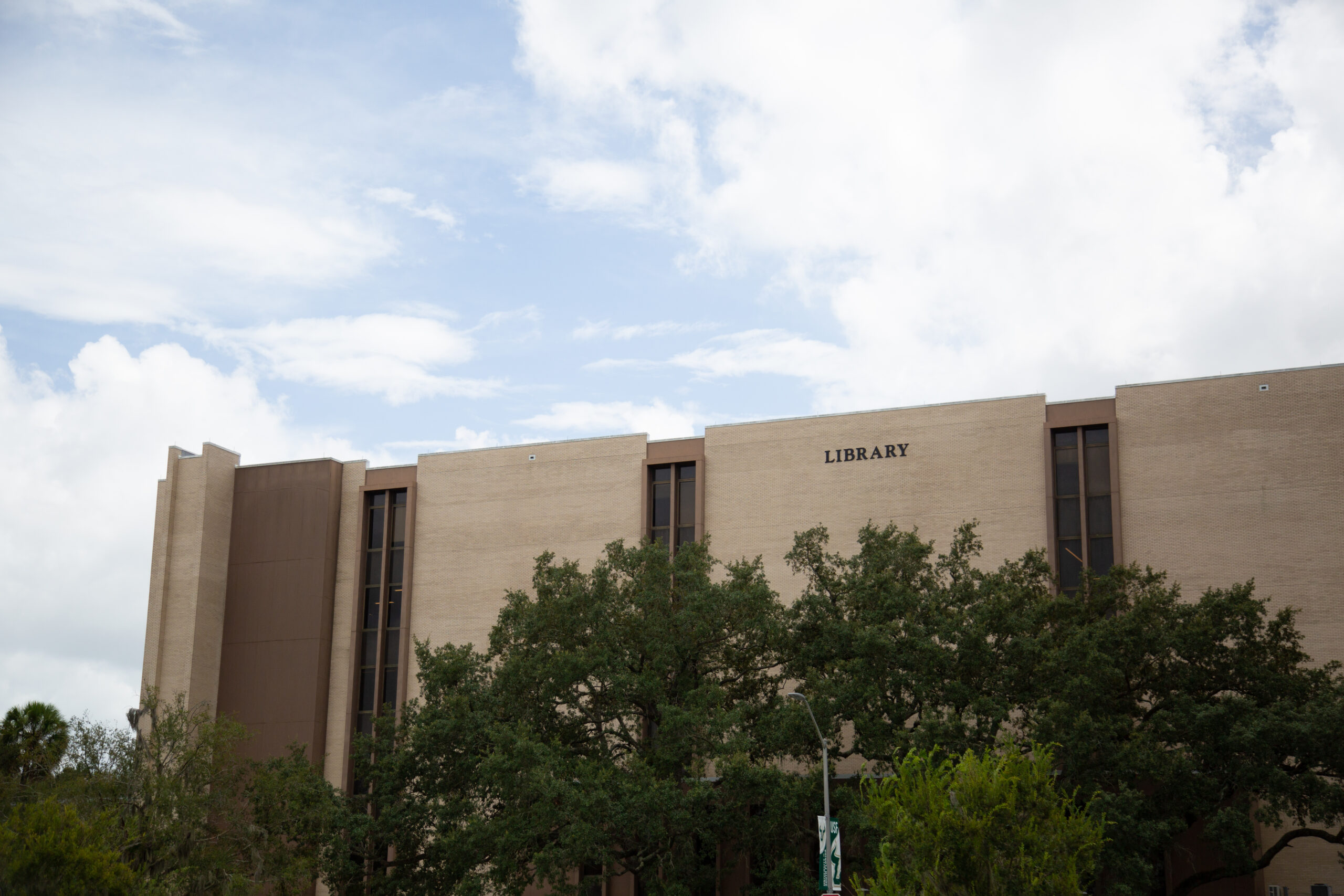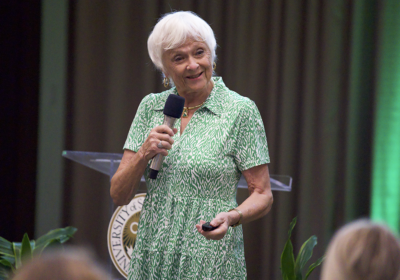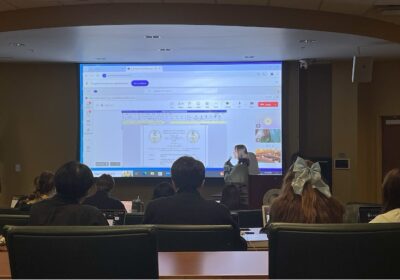Swiping USF IDs. Increased security. The future of the Tampa campus library

From increased security to needing to swipe your ID to enter, a host of changes are coming to the USF Library.
Beginning in June, the library will undergo construction to the front entrance of the building to implement turnstiles. The turnstiles will require students and staff to scan their USF IDs in order to access the building past the lobby, according to Carol Ann Borchert, senior dean of USF Libraries.
Camera installations in late 2022 and the addition of two full-time security personnel have helped maintain a sense of safety, Borchert said. However, the front entrance will still undergo further renovation.
A station for University Police (UP) will be placed near the library’s Starbucks. This space will allow UP to monitor the building, according to Borchert.
UP will also train community officers to man the security station, de-escalate intense situations and call the police when needed.
Borchert said the university has been hypervigilant about security ever since the 2014 FSU shooting. A gunman shot and killed three students at the Strozier Library during peak hours of final exam season, according to a November 2014 CNN article.
“[At FSU], they were able to lock the doors and contain the threat before it got all the way into the building and saved a lot of people,” Borchert said. “We can’t do that with our current configuration.”
To help attendees navigate the turnstiles, a service desk will be placed in between where students swipe to enter and the entrance, according to Todd Chavez, dean of the USF Libraries.
The service desk will be staffed during the library’s business hours and will give students temporary access if they forget their ID. Staff will help non-student community members enter the library.
The front entrance will be shifted 15 feet to the left and expanded to 24 feet to allow reception visibility of the entrance. The doors are currently 20 feet wide and feature two sliding doors, which will be converted to five pairs of double doors and two single doors.
The modification will make it easier to herd students out of the building in case of an emergency. Given the size and popularity of the library, an unobstructed exit is invaluable, according to Chavez.
The reconstructed entrance will also be more weather-resistant, Chavez said.
“We’re always nervous about a storm coming through… and things that can fly through the glass,” Chavez said.
The project can cost up to $2.7 million and will be funded by the legislature, according to Chavez. He has been working on the project since 2020 and has been seeking funding since long before then.
The project is expected to be completed in August. During this time, the library will continue to be accessible to students but with more restricted entry due to the construction.
Chavez said the end goal with these changes is to protect students.
“It’s just going to help us control access a lot more than we can today,” Chavez said.






